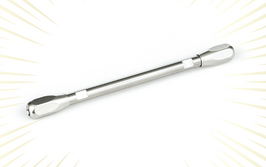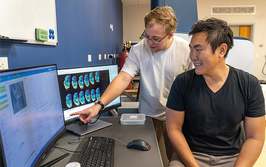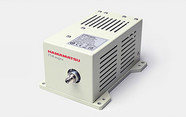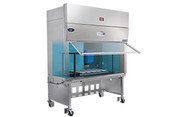The HALO® Effect
Tim Langlois, President of AMT, celebrates two decades of cherishing quality and driving innovation for the HPLC community
| 5 min read
sponsored by Advanced Materials Technology
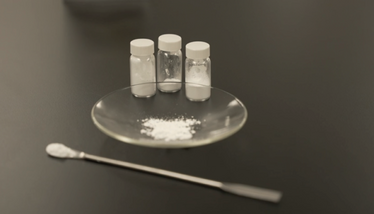
Please give us an overview of Advanced Materials Technology – and the 20-year milestone…
Advanced Materials Technology (AMT) was founded by me and Joe DeStefano back in May 2005. AMT gave both of us an opportunity to fulfill our ambitions of starting a business that used our knowledge of liquid chromatography and silica chemistry to develop products that were both innovative and commercially successful. A combination of the resulting products, a dedicated team of employees focused on quality, lifelong connections within the HPLC community, and a strong network of knowledgeable column distributors around the world have helped make AMT a 20-year success.
Can you take us back to the development of the AMT’s SPP column – what inspired the innovation?
After establishing the company, we hired our friend and former colleague Dr. Jack Kirkland – an HPLC pioneer whose name will be familiar to most in the field. He worked with us on several different silica particle projects, one of which was the design of a small-particle superficially porous particle (SPP). Although SPP is more common nowadays, AMT had to overcome the task of placing nanoparticles on the surface of a non-porous micron size bead in an orderly fashion. To put that in perspective, around 75 of these non-porous beads equate to the thickness of a human hair, while around 15,000 nanoparticles add up to that same width. Under magnification our SPP looked like a halo, inspiring the brand HALO®.
One of AMT’s key innovations is Fused-Core® Technology. Can you explain how it works and how it improves chromatographic performance?
Fused-Core® Technology involves a particle composed of a solid core, surrounded by a thin layer of porous silica thermally fused onto the core at high temperature. Columns packed with such particles have been chromatographically proven to provide improved separation performance over totally porous particle columns. Why? Because the distance sample molecules travel inside Fused-Core® particles is comparatively shorter than that with totally porous particles.
Superficially porous particles (SPPs) are a means of improving the ability and efficiency of packed bed HPLC columns operating at higher flow rates, which enables faster separations. A natural desire when performing analytical separations is to carry out tasks at a greater speed. However, this challenges the fundamental relationships between mobile phase flow and the transfer of sample components between the stationary phase on the particles and the moving fluid: the transfer of components of interest is fastest with shorter paths able to move fluid through the packed bed smoothly. The Fused-Core® particles are up for the task!
What key challenges do AMT’s HALO columns help to address?
Over the past 20 years, our research at AMT has pursued the development of SPP for separations of larger molecules – biological macromolecules, in particular. The ability to efficiently separate large molecules is directly enabled by use of large pore SPP column packings (for example, 400 Å or 1000 Å). The effects of pore size and shell thickness on SPP design have been explored in many publications. These studies show that manipulating material properties enables faster and more efficient reversed-phase (RP) and hydrophilic interaction liquid (HILIC) chromatographic separations of molecules up to at least 150 kDa, such as monoclonal antibody immunoglobulin (mAb IgGs). This also extends to various conjugates of such proteins – antibody-drug conjugates, for example – and synthetic nucleic acids. As has been independently assessed, wide pore SPPs are an authentic step forward for separations, as they become frontline products in protein analytical science.
Can you give us an overview of AMT’s full product line?
The HALO® product line spans a diverse range of products to meet market demands, ranging from capillary (<1 mm inner diameter) to preparative columns (>10 mm inner diameter). AMT was founded for solutions of small molecule separations, which now comprise 15 chemistries, but we continue to innovate with our HALO® BIOCLASS line of columns to ensure we remain at the forefront of bioseparations. These columns offer the necessary particle and pore morphology for the analysis of proteins, peptides, oligonucleotides, and glycans. AMT’s innovative 1000 Å protein column for studying intact monoclonal antibodies (as well as other large proteins) was a first-mover separations innovation to provide high resolution characterization. We also released the HALO® Oligo column to address needs in the rapidly-growing oligonucleotide therapeutic space.
More recently, AMT has come to the market with application-specific columns to address shortcomings of environmental LC separation methods. The HALO® ENVIROCLASS line includes solutions for PFAS and PAH, joining the other small molecule chemistries for the analysis of additional environmental concerns, such as pesticides, mycotoxins, and herbicides.
How does AMT ensure that its columns continually meet high standards of quality?
Quality and customer satisfaction are paramount to the success of AMT. After all, without a satisfied customer that’s willing and able to purchase the “same” column for years to come, our business ceases to be successful. AMT is an ISO 9000 company that uses quality-by-design principles. Perhaps most importantly, we create all parts in-house – from the start of the silica particle to the finished column – to ensure successful separations every time. With relentless quality, and process control from the beginning of the silica synthesis to the end column, AMT is committed to Quality (with a capital Q)!
As AMT celebrates its 20-year milestone, what’s next for the company?
We’ve just finished a major expansion and facility upgrade to prepare ourselves for the next 10 years (and beyond) of increased business. Our new product pipeline is very healthy, with separation products addressing challenges in aforementioned “hot” areas, including oligonucleotide separations and short-chain PFAS analysis. But we are also entirely committed to the development of new columns that provide our users with greater flexibility in achieving their separation goals.
We also continue to participate in conferences – both technically and commercially – to forge new relationships with customers in the industry and build our understanding of the evolving needs of LC separations. The need for face-to-face interactions was proven when we launched our 1.5 mm ID columns: the market was demanding the sensitivity of a micro system, but with the robustness of an analytical system. Customers also had sustainability initiatives around organic solvent consumption. Our 1.5 mm ID column hardware bridged the gap between a micro-LC column and an analytical 2.1 mm ID column and, in turn, provides greater sensitivity through enhanced detector signal response while using 50 percent less solvent. All of this in a format that can be used on a commercial UHPLC system – ultimately a better solution for separations and the planet.
More recently, our developments have focused on helping separation scientists improve their chromatographic performance against basic analytes, prevalent in the pharmaceutical industry. This includes both a high pH and high temperature stable phase, as well as positively charged surface chemistry. We’ve also recently introduced an inert line of columns that prevent unwanted sample adsorption to stainless steel. I’m very proud to say that the team at AMT is still applying technical expertise to produce new technologies – just like we did 20 years ago! A quick browse through our latest catalog shows different particle sizes, pore sizes, including the first 1000 Å, bonded phases, and more. As we go forward, we’ll continue to develop and introduce new technology to the separations community. Oh – and I should add that we are now the only SPP manufacturer who can claim 20 years of manufacturing history in sub-3 micron SPP products!
